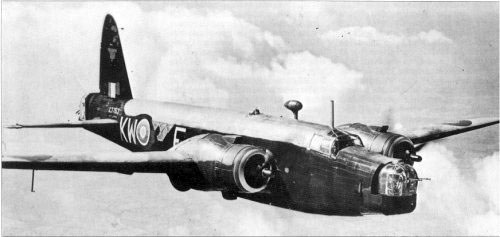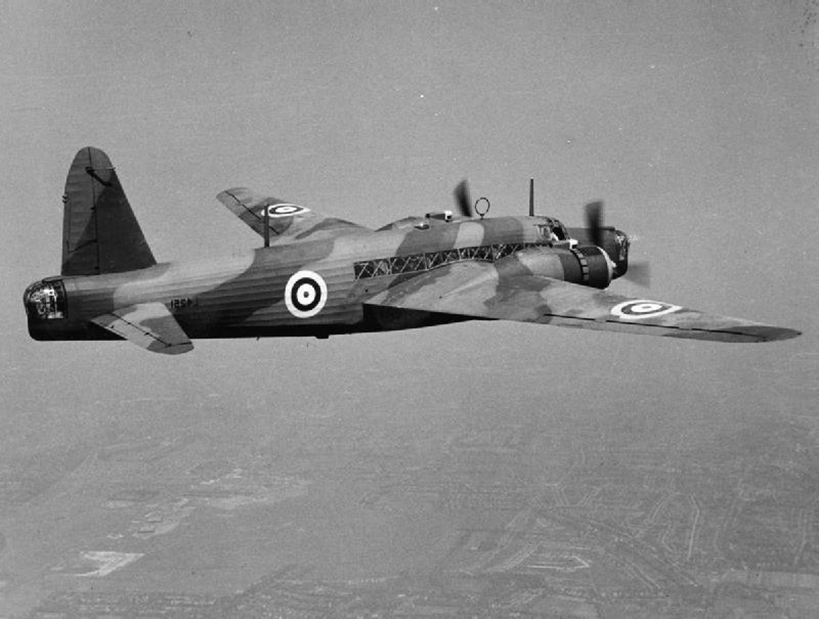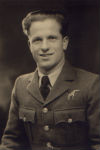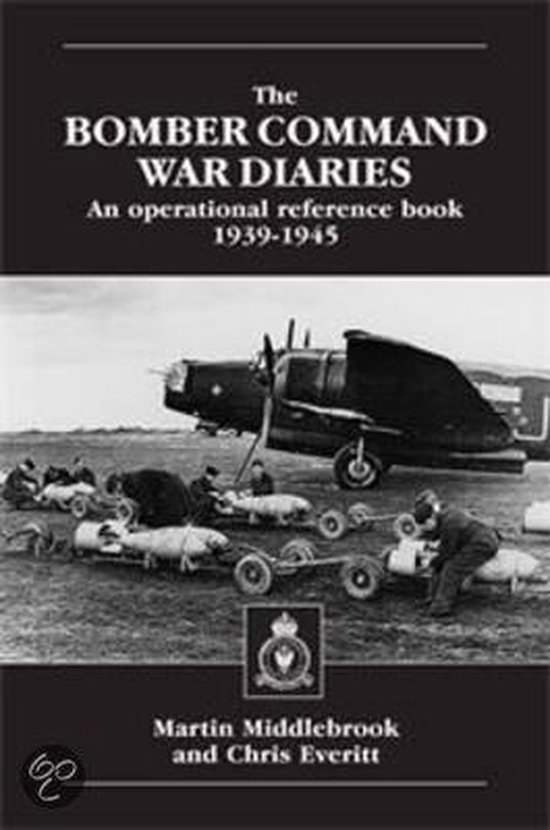Crash of Wellington BK198 near Bergen
Introduction
The Runnymede Memorial at Englefield Green – overlooking the River Thames – commemorates by name more than 20.000 Commonwealth airmen who were lost in World War Two during operations from bases in North and Western Europe, and who have no known graves. Their names are engraved into the stone walls of the memorial, according to country, year of death and rank. Most of these airmen where lost without trace over sea. Such was the fate of three members of the crew of Wellington BK198. This aircraft from No.142 Squadron was lost on a so-called ‘gardening’ operation on the night of 7/8 November 1942. Although the machine crashed only kilometres from the Dutch coast and German sources mention four airmen were washed ashore the following day, only two members out of the crew of five have a known grave.
Gardening
RAF Bomber Command tried to inflict damage to the axis war machine from the air. Mainly by means of strategic bombardments on industrial and military targets. But crews were often sent on "Gardening" operations as well. Bomber Command strategically placed mines to hinder German shipping. The waterways were code named using vegetable names, therefore the minelaying was code-named "Gardening". On the night of 7/8 November 1942, thirty-six Wellingtons of No.1 Group were detailed for minelaying operations in various areas from St-Nazaire (France) to Denmark. Ten of these Wellington bombers were delivered by No.142 Squadron, which was based at RAF Station Grimbsy. Six of the squadron’s aircraft were sent to the Ouessant area (France) and the other four to Texel (The Netherlands). Wellington BK198 was one of four Wellingtons sent on the Gardening mission to Texel. The aircraft carried two 1500 lb. (680kg) mines, the maximum for a Wellington bomber. These mines were to be dropped from low-level. A parachute attached at the end would facilitate entry into the water. The crew of Wellington BK198 for this gardening operation was as follows:
Pilot: Sergeant Richard Francis Hill (age unknown, British)
Navigator: Sergeant Joseph Atkinson (25 years old, British)
Bomb Aimer: Sergeant Noel Briggs Collins (age unknown, British)
Wireless Operator/Air Gunner: Sergeant Thomas Woodhouse (29 years old, Australian)
Air Gunner: Sergeant Martin Randolph Hehir (26 years old, Australian)
Woodhouse and Hehir were both from New South Wales and serving with the Royal Australian Air Force. They had embarked at Sydney for the United Kingdom on 30 March 1942. The crew was still very inexperienced in early November. This gardening operation was only their first operational sortie since they were posted to 142 Squadron. The five airmen had ‘crewed-up’ at No.27 Operational Training Unit, where they were part of No.24 Course. They received the last part of their training here at RAF Litchfield during a three month period from July till October. They were posted to 142 Squadron on 17 October 1942.
Fatal flight
On the evening of 7 November 1942 Wellington BK198 was the third out of four aircraft of 142 Squadron detailed for the Texel area to take off from RAF Grimsby. The crew took off at 22:43 hours. Hill set course for Texel, which was a flight of just over 1,5 hours. The route recommended to and from the target was as follows: Base - 52.43N 05.18E - 52.47N 04.32E - Base. The captains of the first two 142 Squadron’ Wellingtons – Pilot Officer Chisholm (BJ768) and Sergeant Stanley Freestone (BK280) – both reported a quiet and successful trip. They had ‘planted’ their ‘vegetables in the garden’ without any difficulty or encountering anti-aircraft fire. However, the two other machines did get in trouble over the target. The German defences on the island (Flak Reserve Abteilung 3./845) opened fire on the British aircraft. Wellingtons BK198 and BK368 (Sergeant Raymond Wright) were both hit. Wright managed to keep control and escape from the area after the mines were dropped, but on return to England he had to land at RAF Coltishall because the flak had injured himself and the Navigator, Sergeant Johnston. Wellington BK198 was caught in the searchlights over the target and hit by flak. Hill lost control over the aircraft, either because of the damage inflicted by the flak or due to the intense searchlight glare which blinded him. The bomber went down and hit the water at 00:38 hours in the target area.
Bergen General Cemetery
The following day the Germans recovered the body of Flight Sergeant Thomas Woodhouse from the sea near Bergen aan Zee. German sources (Totenliste 124 and a Death card) mention three other unidentified airmen were also washed ashore at that time. They were believed to be members of the same crew. Woodhouse was buried in grave 141 at the Bergen General Cemetery. Grave 140 was eventually exhumed by the Imperial War Graves Commission and the remains identified as Sergeant Atkinson. The graves of the other two unknown mentioned in the German Totenliste could not be located anymore. As the aircraft carried a crew of five, it was impossible to make any definite statement regarding the fate of the other three crew members. It was therefore decided to include the names of Hill, Collins and Hehir on the Runnymede Memorial in Englefield Green, Egham. They are commemorated on panels 80, 85 and 111.
Nowadays Woodhouse and Atkinson rest in adjoining graves on row A of the allied plot at the general cemetery in Bergen. The plot contains 34 unknown burials, of which 31 were identified as airmen. However, the dates of death on the headstones of most unknown airmen do not correspond with the date of the crash of Wellington BK198. Whether two members of the crew rest in Bergen general cemetery will probably remain a mystery forever.
Extra information
If the reader of this article has further information on this bomber or its crew, then you are kindly requested to get in touch with the author by using the feedback form.
Definitielijst
- Abteilung
- Usually part of a Regiment and consisting of several companies. The smallest unit that could operate independently and maintain itself. In theory an Abteilung comprised 500-1,000 men.
- Bomber Command
- RAF unit which controlled strategic and sometimes tactical bombing (as in Normandy)
- Commonwealth
- Intergovernmental organisation of independent states in the former British Empire. A bomber crew could include an English pilot, a Welsh navigator, air gunners from Australia or New Zealand. There were also non-commonwealth Poles and Czechs in Bomber Command.
- Flak
- Flieger-/Flugabwehrkanone. German anti-aircraft guns.
- RAF
- Royal Air Force. British air force
- Squadron
- A military unit in the Belgian navy usually six to eight small ships operating together under one command. The smallest military unit in the Dutch air force of about 350 men. In most countries is the designation of a military unit thesize of a company. It is either an independent unit, such as a battery, or part of a bigger Calvary unit. In the air force it is the designation of a unit of aircrafts.
Images
Wellingtons of No.142 Squadron involved in the operation
An overview of the other Wellingtons of No.142 Squadron which were detailed for the Gardening operations on the night of 7/8 November 1942.
Wellington BJ705 (QT-U)
Pilot: Pilot Officer William Thomas Bent (26 years old, American)
Navigator: Flight Sergeant Aubrey Arthur Smith (age unknown, British)
Bomb Aimer: Flight Sergeant Isaac Kennedy (23 years old, New Zealander)
Wireless Operator/Air Gunner: Sergeant Archibald Sinclair (28 years old, British)
Air Gunner: Pilot Officer George David Ronald Thompson (age unknown, British)
Wellington BK303 (QT-B)
Pilot: Pilot Officer Jack Pershing Berry (25 years old, American)
Navigator: Sergeant Vernon Peter Bruce Hill (19 years old, Canadian)
Bomb Aimer: Sergeant George Shirley Davenport (age unknown, British)
Wireless Operator/Air Gunner: Sergeant Ivor Leonard Ernest Mantell (20 years old, British)
Air Gunner: Sergeant John Webster (age unknown, British)
Wellington BK236 (QT-L)
Pilot: Flight Sergeant Wilfred Allan Gill (22 years old, British)
Navigator: Sergeant Philip Bond (age unknown, British)
Bomb Aimer: Sergeant Norman Leonard Child (27 years old, British)
Wireless Operator/Air Gunner: Sergeant William English Moore (27 years old, British)
Air Gunner: Sergeant Martin Watt Sloan (age unknown, British)
Wellington BK305 (QT-V)
Pilot: Sergeant J. P. Kavanagh (age unknown, Canadian)
Navigator: Sergeant William James Olde (25 years old, British)
Bomb Aimer: Sergeant Arthur Elliott (age unknown, British)
Wireless Operator/Air Gunner: Pilot Officer E. J. Henly (age unknown, British)
Air Gunner: Sergeant William Bullen (23 years old, British)
Wellington BK277 (QT-A)
Pilot: Sergeant Albrecht Maxwell Jensen (21 years old, Australian)
Navigator: Sergeant Robert Finlay Peterson (33 years old, Australian)
Bomb Aimer: Sergeant Albert Jowers (20 years old, Australian)
Wireless Operator/Air Gunner: Sergeant Frank Ronald Marples (29 years old, British)
Air Gunner: Sergeant Ernest Hill (35 years old, British)
Wellington BK299 (QT-D)
Pilot: Sergeant Cecil George Cook (age unknown, British)
Navigator: Sergeant Charlie Brameld (21 years old, British)
Bomb Aimer: Sergeant J. B. Ward (age unknown, Canadian)
Wireless Operator/Air Gunner: Sergeant James Ellis (age unknown, British)
Air Gunner: Sergeant Joseph Manuel (age unknown, British)
Wellington BJ768 (QT-Q)
Pilot: Pilot Officer Ruari Ian Lambert Chisholm (21 years old, British)
Navigator: Pilot Officer C. E. Colvin (age unknown, British)
Bomb Aimer: Sergeant C. Allen (age unknown, British)
Wireless Operator/Air Gunner: Sergeant J. H. France (age unknown, British)
Air Gunner: Sergeant Edmund Anthony Hinke (23 years old, Canadian)
Wellington BK368 (QT-E)
Pilot: Sergeant Raymond Johnston Wright (30 years old, New Zealand)
Navigator: Sergeant H. R. Johnston (age unknown, New Zealand)
Bomb Aimer: Sergeant R. S. Rich (age unknown, British)
Wireless Operator/Air Gunner: Sergeant William Scarlett (27 years old, British)
Air Gunner: Sergeant Kenneth Stanley Biggs (20 years old, British)
Sergeant Raymond Wright was awarded the Distinguished Flying Medal for his display of skill, courage and determination on this operation.
Wellington BK280 (QT-F)
Pilot: Sergeant Stanley Norman Freestone (21 years old, British)
Navigator: Sergeant Ronald Arthur Leavers (24 years old, British)
Bomb Aimer: Sergeant F. Weeks (age unknown, British)
Wireless Operator/Air Gunner: Sergeant L. T. Whittington (age unknown, Canadian)
Air Gunner: Sergeant William Charles Higgs (age unknown, British)
Extra information
If the reader of this article has further information on these bombers or its crews, then you are kindly requested to get in touch with the author by using the feedback form.
Definitielijst
- Squadron
- A military unit in the Belgian navy usually six to eight small ships operating together under one command. The smallest military unit in the Dutch air force of about 350 men. In most countries is the designation of a military unit thesize of a company. It is either an independent unit, such as a battery, or part of a bigger Calvary unit. In the air force it is the designation of a unit of aircrafts.
Information
- Article by:
- Pieter Schlebaum
- Published on:
- 14-09-2016
- Last edit on:
- 21-11-2023
- Feedback?
- Send it!
Related themes
Related persons
Related books
Sources
- CHORLEY, W.R., RAF Bomber Command Losses of the Second World War, 1942, Ian Allan Publishing, 1998.
- MIDDLEBROOK, M. & EVERITT, C., The Bomber Command War Diaries, Midland Publishing, 2011.
No.142 Squadron Operations Record Book
No.27 Operational Training Unit Operations Record Book












